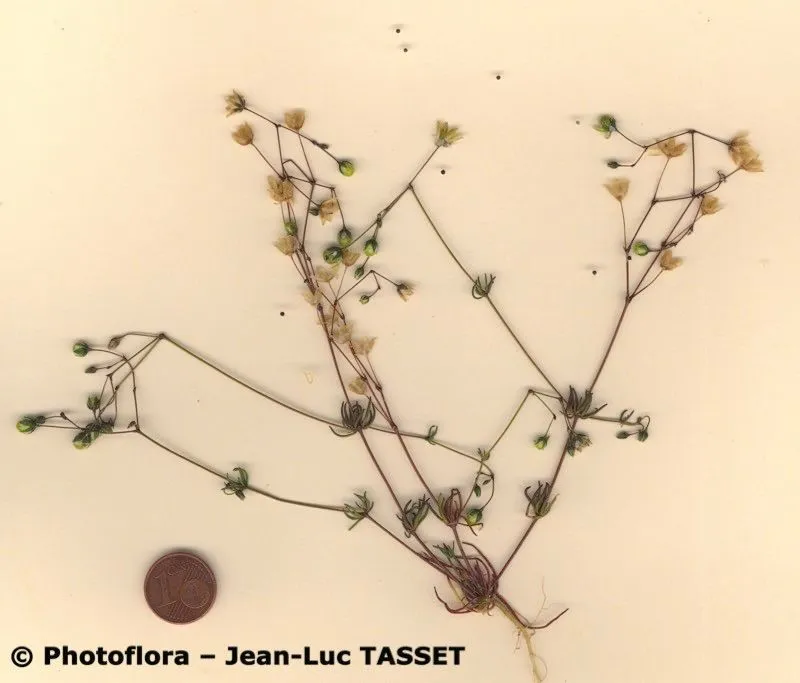Family: Iridaceae
Author: Herb.
Bibliography: J. Hort. Soc. London 2: 273 (1847)
Year: 1847
Status: accepted
Rank: species
Genus: Crocus
Vegetable: Unknown
Observations: S. Hungary to SW. Croatia and NW. Bulgaria
Description
The Early Crocus, scientifically known as Crocus tommasinianus, is a captivating species belonging to the family Iridaceae. First documented in 1847 by esteemed botanist Herb., this plant boasts a delicate and early-blooming nature, which has endeared it to horticulturists and flower enthusiasts alike.
Originating from the serene landscapes stretching from southern Hungary to southwestern Croatia and northwestern Bulgaria, the Early Crocus thrives in these regions’ specific climatic and soil conditions. Its geographic range highlights the plant’s adaptability to both temperate and continental climates, making it a resilient addition to various garden ecosystems.
The Early Crocus is most notable for its slender, tubular flowers that herald the arrival of spring. These blooms are typically pale lilac to rosy purple, though variations can occur, adding a splash of color to the often-dreary late winter and early spring garden. Each perianth segment is delicate and smooth, elegantly curving outward to form a star-like shape that captures the sunlight brilliantly.
Beyond its aesthetic appeal, Crocus tommasinianus plays a vital role in supporting local biodiversity. Its early flowering period provides one of the first sources of nectar for pollinators, especially bees, emerging from their winter slumber. This aspect underscores the species’ ecological importance in sustaining early-season pollinator populations.
Horticulturally, the Early Crocus is prized for its ability to naturalize in gardens, lawns, and even woodland settings. Its corms can be easily planted in the fall, requiring minimal effort from gardeners. Once established, the plant typically proliferates, creating delightful carpets of flowers that spread year after year. This naturalizing habit not only enhances garden aesthetics but also minimizes maintenance, making it a favorite for both amateur and seasoned gardeners.
In summary, the Early Crocus (Crocus tommasinianus) is a charming, early-blooming flower that enriches gardens with its delicate beauty and ecological contributions. With its historical roots firmly planted in the botanical literature of the 19th century, this species continues to flourish across Europe, bringing color and life to the early spring landscape.
Common Names
Nld: boerenkrokus
Deu: dalmatiner krokus, elfen-krokus, tommasini-krokus
Eng: early crocus, woodland crocus
Dan: sne-krokus
Fra: crocus de tommasini
Swe: snökrokus
Nob: snøkrokus
Nno: snøkrokus
Cym: saffrwm cynnar
En: Early crocus, Woodland crocus, Snow crocus, Tomasini’s crocus
Bg: Томасиниев минзухар
Cs: Šafrán Tommasiniho
Da: Sne-Krokus
Nl: Boerenkrokus
Fi: Tähtisahrami
Fr: Crocus de tommasini
De: Dalmatiner Krokus, Bauern-Safran, Elfen-Krokus, Tommasinis Krokus, Tommasinis Safran, Tommasini-Krokus, Elfenkrokus
Hu: Illír sáfrány
Is: Snækrókus
Mk: Снежна качунка
Nb: Snøkrokus
Nn: Snøkrokus
Pl: Szafran Tommasiniego
Pt-br: Crócus
Sv: Snökrokus
Cy: Saffrwm cynnar
Synonyms
- Crocus vernus var. tommasinianus ((Herb.) Nyman)
- Crocus tommasinianus f. jeremicii (Randjel.)
- Crocus serbicus (A.Kern. ex Maw)
Distribution
- Albania (native)
- Bulgaria (native)
- Hungary (native)
- Yugoslavia (native)
- Belgium (introduced)
- Germany (introduced)
- Great Britain (introduced)
- Netherlands (introduced)
- New York (introduced)
Additional Images

© copyright of the Board of Trustees of the Royal Botanic Gardens, Kew.

© copyright of the Board of Trustees of the Royal Botanic Gardens, Kew.

© copyright of the Board of Trustees of the Royal Botanic Gardens, Kew.
Flower
Taken Feb 13, 2022 by Decobert Didier (cc-by-sa)
Taken Mar 16, 2018 by Dieter Wagner (cc-by-sa)
Taken Apr 7, 2018 by Saïda Allami (cc-by-sa)
Taken Feb 13, 2022 by Decobert Didier (cc-by-sa)
Taken Mar 3, 2019 by lusen (cc-by-sa)
Habit
Taken Mar 12, 2022 by Dieter Albrecht (cc-by-sa)
Taken Sep 26, 2019 by Dieter Wagner (cc-by-sa)
Taken Feb 22, 2021 by Else Nolden (cc-by-sa)
Taken Feb 17, 2022 by Jim Knopf (cc-by-sa)
Taken Feb 1, 2019 by Bryant Hawkins (cc-by-sa)
Leaf
Taken Feb 11, 2022 by anna rippl (cc-by-sa)
Taken Mar 2, 2022 by Sabina Hartmann (cc-by-sa)
Taken Feb 27, 2022 by Annemarie Ahrens-Stehle (cc-by-sa)
Taken Feb 22, 2021 by Sabina Hartmann (cc-by-sa)
Taken Mar 12, 2022 by Dieter Albrecht (cc-by-sa)
Other
Taken Mar 7, 2021 by mohammad fazel dehkordi (cc-by-sa)
Taken Feb 8, 2020 by Carvalho Daniela (cc-by-sa)
Taken Feb 15, 2018 by Eva Sebrechts (cc-by-sa)
Taken Apr 16, 2021 by Dieter Wagner (cc-by-sa)
Taken Feb 26, 2022 by Ernst Fürst (cc-by-sa)
Bark
Taken Feb 21, 2021 by Jose Walk (cc-by-sa)
Taken Feb 23, 2022 by Sabina Hartmann (cc-by-sa)
Taken Feb 21, 2021 by missfein (cc-by-sa)
Sources
- WFO (No URL)
- IPNI (No URL)
- GBIF (https://www.gbif.org/species/2747564)
- POWO (http://powo.science.kew.org/taxon/urn:lsid:ipni.org:names:436740-1)
- PlantNet (https://identify.plantnet.org/species/the-plant-list/Crocus tommasinianus Herb.)























